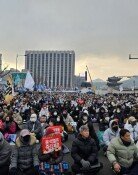Only Strategy: Attacking, FIFA Opined
The 2002 Korea-Japan World Cup has proved what it means to be a dynamic soccer, despite he shocking uprising of soccer outsiders like Korea, Turkey, Senegal and USA.
Le Monde, a major daily in France, reported on June 28, 2002, the analysis of this World Cup by FIFA Technical Committee member.
The analysis silenced all the gossips around this World Cup. Rumor has it that the quality of this game was low. Gossip-makers referred to the shocking advancement of “soccer-developing” countries and Asia’s first hosting of the competition.
The following are essentials quoted in Le Monde.
▽ One-man attack up on the front = One of the most outstanding features is found in one-man attacking made by a single striker like Ronaldo of Brazil, Italian Vieri and Sukur of Turkey.
This does not mean that each team has only that striker; it rather means each of them functioned an axis of the team’s attack. In the ’98 World Cup, coaches generally employed the 4-4-2 or 3-5-2 formation. This time, 4-5-1 formation is dominant.
▽ Condensed mid-field = Mid-field has been a real battle ground in order not to lose the initiative of the game.
If one player intercepts, for example, 8-9 opposing players rushed to him. It’s like a basketball. Consequently, team play is more improved than in the ’98 World Cup. Shining personal techniques can no longer score as many goals as before.
▽Threatening attack from the side = Attacking through the center is no longer threatening. Attacks and following goals started from the side. Left and right forwards and defenders ventured out into attacking. That is why more goals were scored in heading shooting than any other time.
▽ All-ground pressing = Only four years ago, only 2-3 teams could do “all-ground” pressing. Now, many countries employ that tactic. It translates into remarkably improved physical strength. It was usually for “small teams” like USA and Costa Rica.
▽ Standardization of keepers’ performances = Generally, keepers are even with each other. But, we could find outstanding players like Oliver Kahn. Also outstanding was the enhanced performance by goalkeepers of Asia and Africa. Lee Woon-jae and Tony Silva of Senegal are good examples.
▽Offensive soccer = Most satisfying part of this competition. We could find this feature in almost all teams. While on records, the average goals per match are 2.48, less than 2.66 in 1998, the trend is irreversible. No team basked in defense.
All of these resulted mostly from the zeal of coaches to show off his country’s superiority through victory. Next factor may be the atmosphere in Korea and Japan.
These innovations were also made possible by factors such as stadiums and grass of high quality and enthusiastic fans.
Headline News
- Joint investigation headquarters asks Yoon to appear at the investigation office
- KDIC colonel: Cable ties and hoods to control NEC staff were prepared
- Results of real estate development diverged by accessibility to Gangnam
- New budget proposal reflecting Trump’s demand rejected
- Son Heung-min scores winning corner kick







